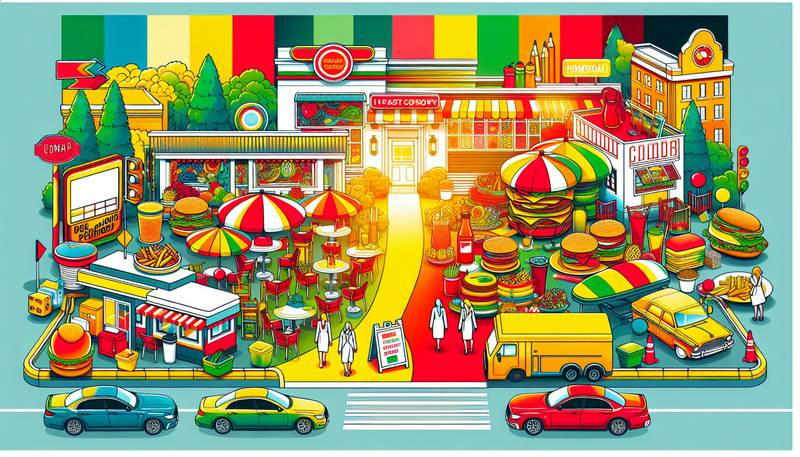Design Psychology: How Colors Influence Consumers

The Impact of Colors: More Than Meets the EyeHave you ever thought about the reason why a fast food restaurant's logo is red and yellow? Or perhaps why hospitals and medical institutions tend to use the color green? Well, dearest reader, let us embark on a colorful journey through design psychology and how it affects our decision-making process as consumers.Color psychology, a sub-field of behavioral psychology, examines the emotional and cultural responses to certain colors. Every color conveys a specific emotional state based on its hue, saturation, and brightness. In the wild and wonderful world of marketing and branding, it is crucial for businesses to understand how to use colors to their advantage and craft a message that will persuade and influence their audience.The Color Wheel of Fortune: A Guide to Colors and EmotionsBefore diving into the practical implications of color psychology in design, let's take a brief look at the color wheel and associate the primary and secondary colors with their corresponding emotions:- Red - passion, excitement, and urgency
- Yellow - optimism, happiness, and warmth
- Blue - trust, calmness, and stability
- Green - health, tranquility, and growth
- Orange - energy, friendliness, and creativity
- Purple - luxury, wisdom, and ambition
Of course, these color-emotion associations are not set in stone, as cultural differences and personal experiences play a significant role in shaping our reactions to colors. However, these general associations provide valuable insights for designers and marketers in selecting the right color palette for their brand or product.Color Me Impressed: Practical Advice for Choosing the Right ColorsNow that we've established the connection between colors and emotions, let's delve into some practical tips and tricks for using colors to their fullest potential in design and marketing:1. Know Your AudienceAs mentioned earlier, cultural factors greatly influence our perception of colors. For example, while white signifies purity and innocence in Western cultures, it represents death and mourning in some Asian cultures. Therefore, it is vital to consider your target audience's cultural background before selecting the colors for your brand or product.2. Leverage Color Associations to Your BenefitThink about the emotions and values you want to convey through your brand or product and choose colors that best represent them. For instance, if you're selling a product that promotes relaxation and stress relief, green or blue might be the perfect choice for your packaging or logo.3. Create Contrast for Improved Readability and EngagementUsing contrasting colors in your design will not only make it visually appealing but also enhance readability. For instance, combining a dark background color with a lighter text color will make it easier for your audience to read and engage with your content. The classic black-and-white combination is always a safe bet, but don't be afraid to explore other contrasting color schemes.4. Don't Underestimate the Power of White SpaceWhite space, also known as negative space, refers to the areas in your design that are left empty or unmarked. While it might be tempting to fill every inch of your design with color and content, strategically using white space can help guide your audience's eyes and create a sense of balance and harmony in your design.5. Test, Test, Test!Finally, it's essential to test your color choices and design with your target audience. You might think that a particular color combination is a stroke of genius, but if your audience doesn't resonate with it, you might need to head back to the drawing board. Feedback from your target demographic will help you refine your design and, ultimately, create a more effective marketing tool.Colorful Conclusions: The Power of Design Psychology in MarketingIn conclusion, the strategic use of colors in design can be a powerful tool for brands and businesses to connect with their audience, convey their values, and influence consumer behavior. By understanding the emotional and cultural associations of different colors, designers and marketers can craft compelling visuals that grab the audience's attention and leave a lasting impression.So, next time you find yourself captivated by a billboard, brochure, or website, take a moment to appreciate the thought process behind the color choices, and marvel at the influential power of design psychology. And who knows – maybe you'll start seeing the world through a more colorful lens!
|
|







